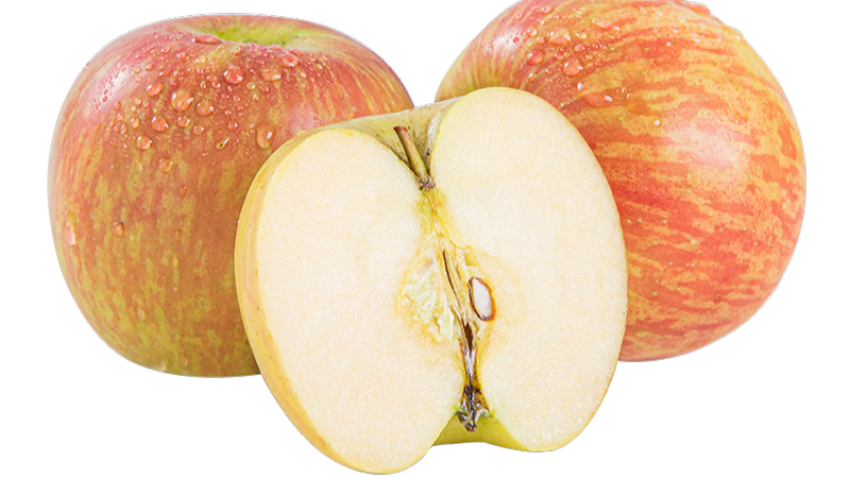You are here
Back to topChinese Apple Exports in 2020 Surpass 1 Million Tons

According to statistics provided by China’s General Administration of Customs, Chinese apple exports in 2020 hit 1.058 million metric tons, representing a year-on-year increase of 9%. The total value of these exports was $1.45 billion dollars, an increase of 16%.
EXPORT STATISTICS
The top five destinations for Chinese fresh apple exports in 2020 in order of shipping volume were as follows: Bangladesh, 179,000 tons ($180 million); the Philippines, 168,000 tons ($210 million); Vietnam, 160,000 tons ($320 million); Thailand, 137,000 tons ($210 million); and Indonesia, 134,000 tons ($170 million). These five destinations together accounted for 73% and 75% of all Chinese fresh apple exports by volume and value, respectively.
China’s top apple exporting provinces in 2020 were as follows: Shandong province, 616,000 tons ($790 million); Yunnan province, 201,000 tons ($380 million); Liaoning province, 57,000 tons ($80 million); Gansu province, 53,000 tons ($60 million); and Shaanxi province, 41,000 tons ($40 million). These five provinces together accounted for 91% and 93% of all Chinese fresh apple exports by volume and value, respectively.
Over the past few years, Chinese apple exports have been somewhat turbulent. In 2014, the total export volume was 868,000 tons; in 2015, this number fell to 833,000 tons. However, total exports then jumped to 1.3 million tons in 2016 and hit a record 1.33 million tons in 2017. Unfortunately, this momentum subsequently began to falter, with total exports decreasing as domestic apple prices increased. In 2018, total exports were 1.115 million tons, a year-on-year decrease of nearly 16%. In 2019, exports dropped further to 943,000 tons.
INTERNATIONAL PRODUCERS
Even though Chinese apple exports in 2020 fell short of the U.S. Department of Agriculture’s previous forecast of 1.2 million tons, China remains the world’s largest apple exporter. After China, the top exporters are the European Union, the U.S., Chile and South Africa.
Meanwhile, commercial apple production in Europe is returning to normal levels. The largest apple exporter in the European Union is Poland, whose apple producers are recovering from frost damage and drought suffered during the previous year. Production has increased, with an anticipated export volume of approximately 1 million tons.
Russia is the largest apple importing country in terms of volume, with annual imports exceeding 800,000 tons. The Russian apple industry is continuing to develop, with increased orchard planting areas and old orchards being replaced. However, total Russian orchard yields have not yet hit anticipated levels. Consequently, apple supplies are forecast to remain low, with these large import volumes expected to continue for the next few years. Other top apple importers include the European Union, Bangladesh, Egypt and Mexico.
CHINESE PRODUCERS
China’s apple industry is distinct from its international competitors for the following reasons. First, apple exports are heavily dependent on competitive pricing. Although China is the largest apple exporting country in the world, its fresh apple exports are priced lower than those of other large producers. Throughout 2016/17, apple export prices were low and the overall export volume was high. Conversely, during 2018/19, apple prices increased while overall exports fell.
Second, China has an abundance of apple exporting companies, which means that brand recognition is low. Although Chinese national policies encourage apple exports, the rate of export tax rebates has increased by 10%. With over 600 apple exporting companies and minimal brand recognition, consumer purchases are primarily dictated by price. This has caused profit margins to remain low. China’s apple exporters are also relatively unorganized, lacking any well-known products or producers, making them somewhat uncompetitive in the international market.
Third, apple exporters are too concentrated in the low-end market. Chinese apple exporters primarily conduct border or maritime trade with less developed nations. Every year, exports are sent to over 60 countries and regions that lack domestic apple production and where China has a geographical advantage. Important export destinations include East Asia, Southeast Asia and Eastern European countries, with small quantities also being sent to Western Europe and the Americas. China’s growth in the international marketplace has so far been limited by the perceived quality of Chinese apples and the maximum residue limits set by other countries.
Image: Pexels
This article was translated from Chinese. Read the original article.













Add new comment